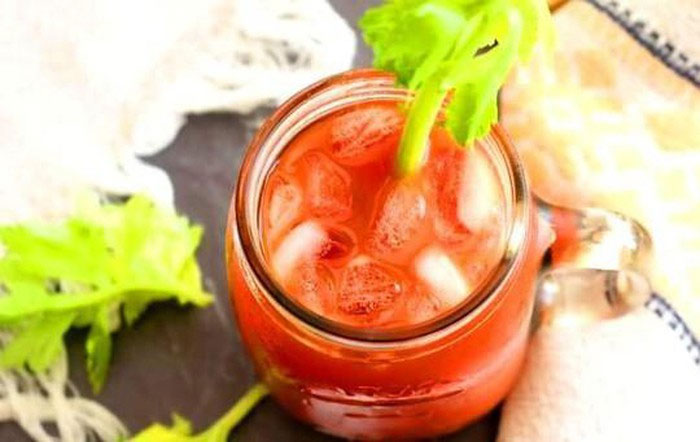Extremely simple juices repel high blood pressure, bad cholesterol
Japanese research shows that only 1 cup of 200ml of this delicious, ultra-cheap and extremely easy-to-do red juice is needed, you can simultaneously fight high blood pressure and bad cholesterol.
Scientists at the Tokyo University of Medicine and Dentistry have invited 480 volunteers to participate in the study of beverages for a year and discovered the "super juice" that is good for the cardiovascular system, and at the same time easy. Making and inexpensive top: pure tomato juice .

The substance that makes up the typical red color of tomatoes helps repel extremely high blood pressure and bad cholesterol - (artwork from the internet).
The most unexpected result occurred in 94 people in the volunteer group, a group of patients with high blood pressure. They had an average drop of 3% in blood pressure, and this happened in people who were not treated with high blood pressure drugs.
Researchers discovered and discovered lycopene , a rich chemical in tomatoes and gives this fruit a delicious red color, capable of preventing plaque from accumulating in the arteries. Since then, the patient's blood vessels are more smoothly, helping to lower blood pressure.
In addition, lycopene has the ability to inhibit LDL - the bad cholesterol, which helps the body's LDL levels drop by an average of 3.3%.This "red chemical" both reduces the absorption of cholesterol in the small intestine, and prevents the synthesis of cholesterol in the liver.
Cholesterol is a type of fat that can build up in arteries, causing atherosclerosis, leading to a risk of vascular occlusion and fatal cardiovascular events such as heart attack or stroke.
To achieve this effect, you only need to drink very small amounts: 1 small glass of about 200 ml of pure tomato juice every day. The researchers also recommend that benefits only be obtained when you do not add salt or sugar to the juice.
The study just published in the journal Science Science and Nutrition.
- Find a simple 'medicine' to treat high blood pressure
- What is high blood pressure for each subject?
- Can menopause slow to appear?
- Find out the secret of increasing blood pressure
- Discovering extremely ugly 'ugly' cholesterol
- 7 tips for lowering blood pressure effectively
- What should I pay attention to on New Year's Day?
- Smoking, eating high cholesterol makes men die 10 years early
- Sleep immediately after lunch is prone to high blood pressure
- The fluctuation of blood pressure is easy to cause stroke
- High blood pressure increases the risk of dementia in middle age by 45%
- There is a link between sleep and high blood pressure
 13 causes of non-itchy rash
13 causes of non-itchy rash How the mouse with human ears changed the world?
How the mouse with human ears changed the world? The truth about 'fried rice syndrome!
The truth about 'fried rice syndrome! What is dental implant?
What is dental implant?